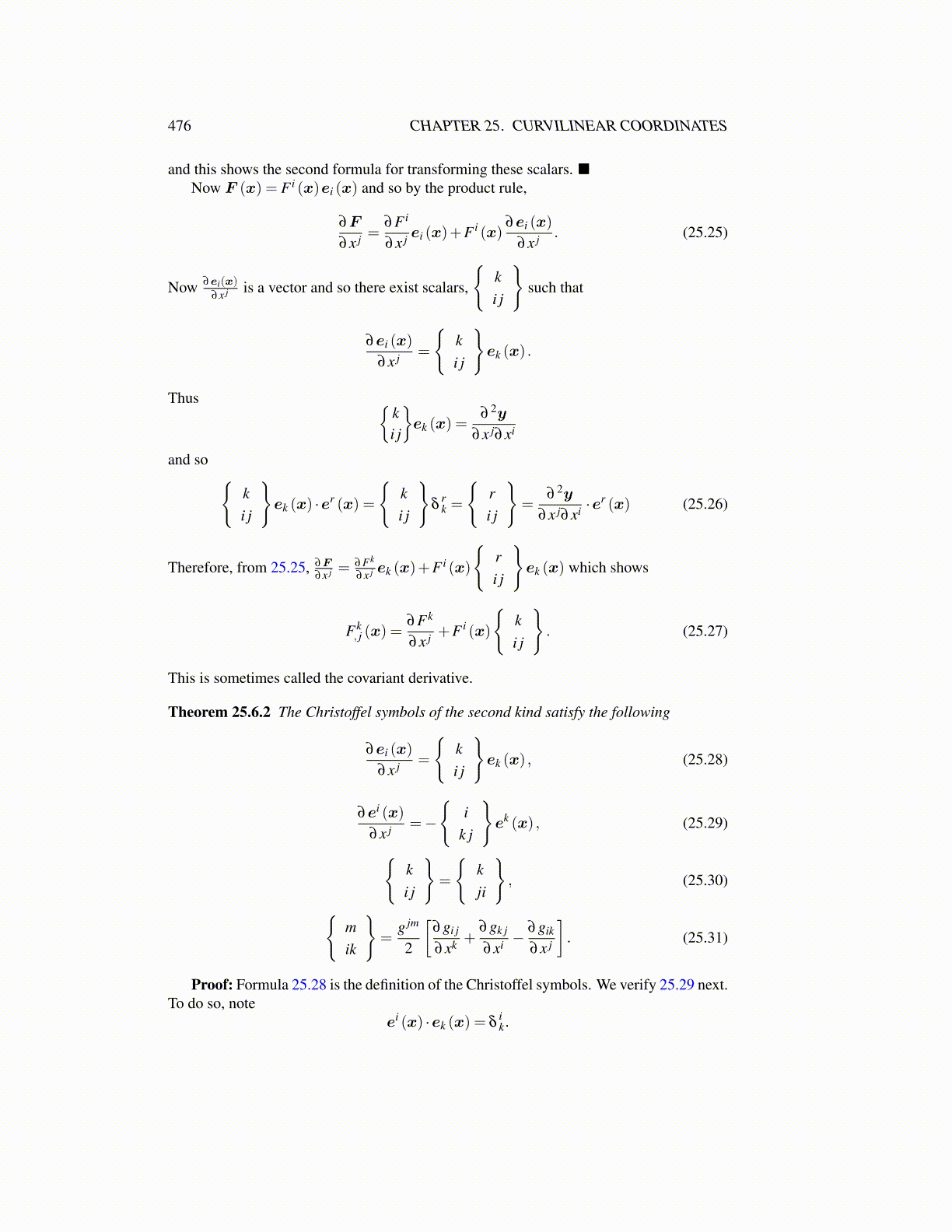
476 CHAPTER 25. CURVILINEAR COORDINATES
and this shows the second formula for transforming these scalars. ■Now F (x) = F i (x)ei (x) and so by the product rule,
∂F
∂x j =∂F i
∂x j ei (x)+F i (x)∂ei (x)
∂x j . (25.25)
Now ∂ei(x)∂x j is a vector and so there exist scalars,
{ki j
}such that
∂ei (x)
∂x j =
{ki j
}ek (x) .
Thus {ki j
}ek (x) =
∂ 2y
∂x j∂xi
and so {ki j
}ek (x) ·er (x) =
{ki j
}δ
rk =
{ri j
}=
∂ 2y
∂x j∂xi ·er (x) (25.26)
Therefore, from 25.25, ∂F∂x j =
∂Fk
∂x j ek (x)+F i (x)
{ri j
}ek (x) which shows
Fk, j (x) =
∂Fk
∂x j +F i (x)
{ki j
}. (25.27)
This is sometimes called the covariant derivative.
Theorem 25.6.2 The Christoffel symbols of the second kind satisfy the following
∂ei (x)
∂x j =
{ki j
}ek (x) , (25.28)
∂ei (x)
∂x j =−
{i
k j
}ek (x) , (25.29)
{ki j
}=
{kji
}, (25.30)
{mik
}=
g jm
2
[∂gi j
∂xk +∂gk j
∂xi −∂gik
∂x j
]. (25.31)
Proof: Formula 25.28 is the definition of the Christoffel symbols. We verify 25.29 next.To do so, note
ei (x) ·ek (x) = δik.